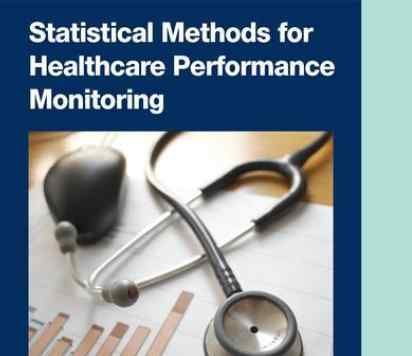
Some of our work is more directly related to evaluating or affecting healthcare policy and practice. Our studies on variation in mortality rates by day of the week of admission or elective surgery have been influential in the debate around 7/7 NHS working. We have always worked with clinicians to develop indicators, and we are also investigating how hospitals use our information and what is the most effective way to present the results to hospital managers.
Users of any databases need to understand the data’s limitations and work around them where possible. We work primarily with administrative data, which present particular challenges. Our published studies included assessments of the impact of primary and secondary diagnosis fields on risk-adjusted mortality rates and provider profiling.
Projects
- Day of the week and patient outcomes
- Treatment journeys in patients with cancer
- Access to primary care and unplanned use of hospital
- Understanding the challenges of using administrative data
Summary
Our 2009 analysis of national data showed a 10% higher odds of death for patients admitted as an emergency at the weekend compared with during the week. Since then, we have found daily variations for stroke, deliveries and elective operations (Friday operations had 40% higher odds of death compared with Monday’s ones).
Outputs
-
Honeyford C, Cecil E, Lo M, Bottle R, Aylin P, 2018, The weekend effect: does hospital mortality differ by day of the week? A systematic review and meta-analysis, BMC Health Services Research, Vol: 18, ISSN: 1472-6963 BMC Health Services Research
- Balinskaite V, Bottle A, Shaw LJ, Majeed A, Aylin P, 2018, Reorganisation of stroke care and impact on mortality in patients admitted during weekends: a national descriptive study based on administrative data, BMJ Quality and Safety, Vol: 27, Pages: 611-618, ISSN: 2044-5415 BMJ Quality and Safety
- Friebel R, Hauck K, Aylin P, 2018, Centralisation of acute stroke services in London: Impact evaluation using two treatment groups, Health Economics, Vol: 27, Pages: 722-732, ISSN: 1057-9230 PubMed
- Palmer WL, Bottle A, Aylin PP, 2015, The association between day of delivery and obstetric outcomes: an observational study, The BMJ, Vol: 351, ISSN: 0959-8138 BMJ
- Aylin PP, Ruiz M, Bottle A, 2015, Exploring the impact of Consultants’ experience on hospital mortality by day of the week: a retrospective analysis of hospital episode statistics, BMJ Quality & Safety, ISSN: 2044-5423 PubMed
- Palmer WL, Bottle A, Davie C, Vincent CA, Aylin P, et al., 2012, Dying for the Weekend A Retrospective Cohort Study on the Association Between Day of Hospital Presentation and the Quality and Safety of Stroke Care, Archives Of Neurology, Vol: 69, Pages: 1296-1302, ISSN: 0003-9942 PubMed
- Palmer WL, Bottle A, Aylin P, 2015, Association between day of delivery and obstetric outcomes: observational study, BMJ-BRITISH MEDICAL JOURNAL, Vol: 351, ISSN: 1756-1833 BMJ
-
Ruiz M, Bottle A, Aylin PP, 2015, The Global Comparators project: international comparison of 30-day in-hospital mortality by day of the week, BMJ QUALITY & SAFETY, Vol: 24, Pages: 492-504, ISSN: 2044-5415 BMJ
Summary
Currently there is scant information on quality or outcomes of care for cancer patients. There is a need for more sophisticated system measures that look at the whole patient journey so that failings in the delivery of healthcare could be identified. The multidisciplinary structured care plan used to map the journey of a patient with a particular condition from the time the patient enters the custody of the care givers until the entire continuum of care is known as an integrated care pathway. Mapping the patient journey at a local level and auditing it against explicit standards of good clinical practice will enable us to intervene both at the individual level and at the system level to improve care. The approach and development of pathway metrics for cancer will be applicable to many other clinical areas.
Care pathways depict the most expected and frequent movements of the patients along their journey. The limitations, with this standardized pathway are:
- Inability to measure its success on an immediate basis and the need to rely on key performance indicators (KPIs) in the future to see impact of modifications
- The pathway does not capture any variations and exceptions made in the processes
- Gaps exist between the guidelines and clinical practice since what is supposed to happen and what actually happens in reality may not be the same
To address these gaps is a challenge for healthcare organisations. There is an urgent need for methods and tools to measure these non-conformities in practice, identify the bottlenecks and deviations in the care process, and present the results in a user-friendly way back to the physicians to take appropriate actions. This work aims to analyse prostate cancer patient treatment pathways within the west and south of London in order to identify delays, bottlenecks and deviations from a known standard pathway (e.g. the pathway suggested by the London Cancer Alliance). These deviations will aid in capacity planning and eventually the development of a tool or model to highlight the nonconformities and gaps in care.
Summary
Access to primary care is crucial for containing the use of emergency departments (ED) and unplanned hospitalisation. Up to 40% of ED visits are believed to be ‘inappropriate’ and potentially treatable in primary care, most commonly among very young children. In a series of analyses, we use national data to explore the changing use of ED services over time and the relation between access to a GP and emergency hospital use. See the Child Health Unit for details.
Summary
Every database has its own unique features that users must be aware of, and there are pros and cons of each. The NHS benefits from a number of national, routinely collected databases that are rich sources of information on activity and are often the only realistic choice for monitoring performance. Part of our work is to discover how to get the most out of them and learn what can and can’t be done with them.
Outputs
- Alexandrescu R, Bottle A, Jarman B, Aylin P. Current ICD10 codes are insufficient to clearly distinguish acute myocardial infarction type: A descriptive study. BMC Health Serv Res 2013; 13(1):468. PubMed
- Bottle A, Sanders RD, Mozid A, Aylin P. Provider profiling models for acute coronary syndrome mortality using administrative data. Int J Cardiol 2013;168(1):338-43. PubMed
- Bottle A, Jarman B, Aylin P. Hospital Standardised Mortality Ratios: Strengths and Weaknesses. BMJ 2011;342:c7116 BMJ
- Bottle A, Jarman B, Aylin P. Hospital Standardised Mortality Ratios: sensitivity analyses on the impact of coding. Health Serv Res 2011;46(6):1741-1761. PubMed
- Aylin P, Bottle A, Majeed A. Use of administrative data or clinical databases as predictors of risk of death in hospital: comparison of models. BMJ 2007; 334: 1044-1049. BMJ
Privacy notice
The Dr Foster Unit at Imperial College London uses your health information for a number of purposes. The Dr Foster Unit GDPR Privacy Notice (PDF) provides a summary of how we use your information.
